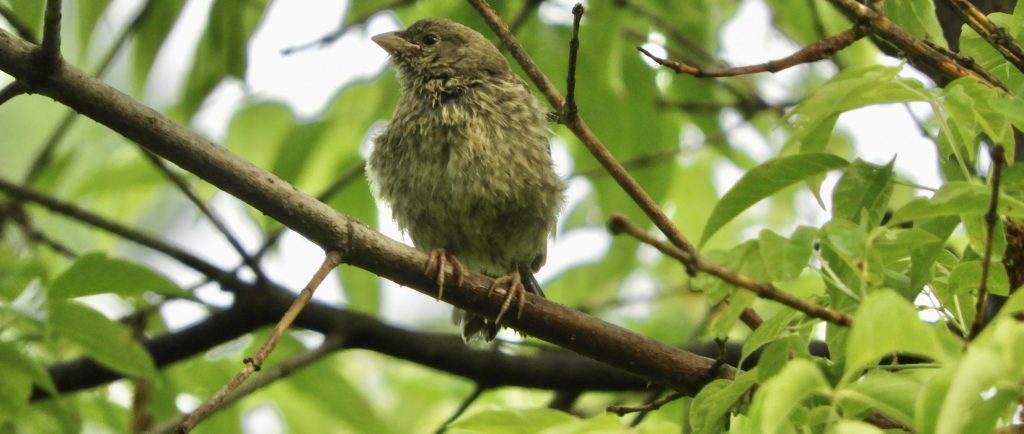
Hendrie Valley, Burlington. ON. June 16 2023. I think June birding is the best: while it lacks the sensationalism of May it is richer for close observation of bird behaviour, the what, how and why. The why is everything about reproduction: courtship, nest site, egg production, incubation and fledging young.
I walked the valley early today, it had rained overnight leaving wide puddles, wet overhanging grasses and non-stop dripping. There was bird song everywhere, all of it familiar, nothing new but all heart-warming. Familiar or not, it represented a riot of song and colour: Indigo Bunting, Baltimore Oriole, Swamp Sparrow, Northern Cardinal, Eastern Wood Peewee, Rose-breasted Grosbeak, Yellow Warbler and many more. Males making sure the world knew that this is his territory, and busy parents foraging food for nestlings. Song Sparrows finding fat caterpillars and other little wriggly things, Eastern Kingbirds and Willow Flycatchers leaping out to snap up passing wasps and Green Herons stalking minnows.
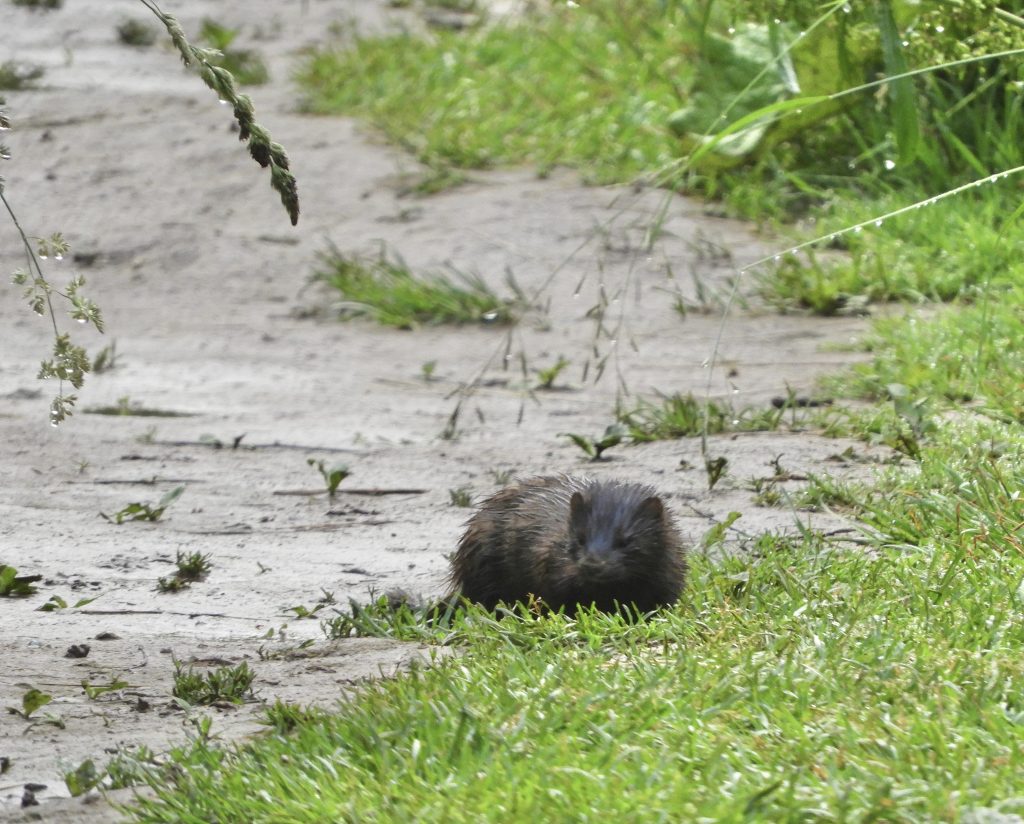
It was not all pleasantness. I passed several waters-edge turtles’ nests that had been raided by Racoons leaving a scatter of torn eggshells, once round like ping-pong balls, now muddied and empty. I stopped when I spotted an American Mink crossing the path ahead of me. It was dripping as if it had swum the creek to get to where it sensed food. It paused alert, looked carefully and then lunged into the deep greenery. I suspect it was after the eggs and young in the nest of a Yellow Warblers who, along with several Red-winged Blackbirds, were screaming ‘Thug! and Murderer! likely to no effect for Mink are accomplished predators. A Yellow Warbler brood would be easy pickings.
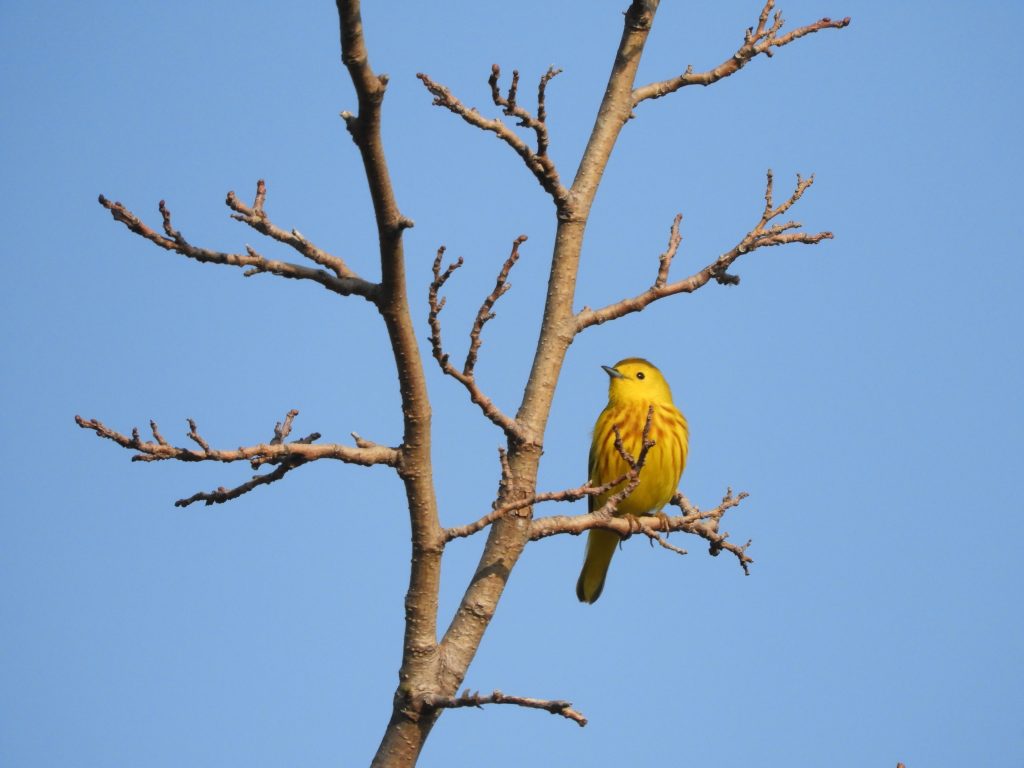
Small movements in a woody tangle caught my eye and I was pleased and mildly surprised to find a newly fledged Brown-headed Cowbird being fed attentively by its foster parent Song Sparrows. Cowbirds are nest parasites, the American equivalent of Eurasian Cuckoos. Adult cowbirds do a lot of socialising and courtship in spring, but save themselves a lot of trouble by laying their eggs in other birds’ nests. The hapless hosts nurture the young cowbird at the expense of their own who are heaved out of the nest to die.
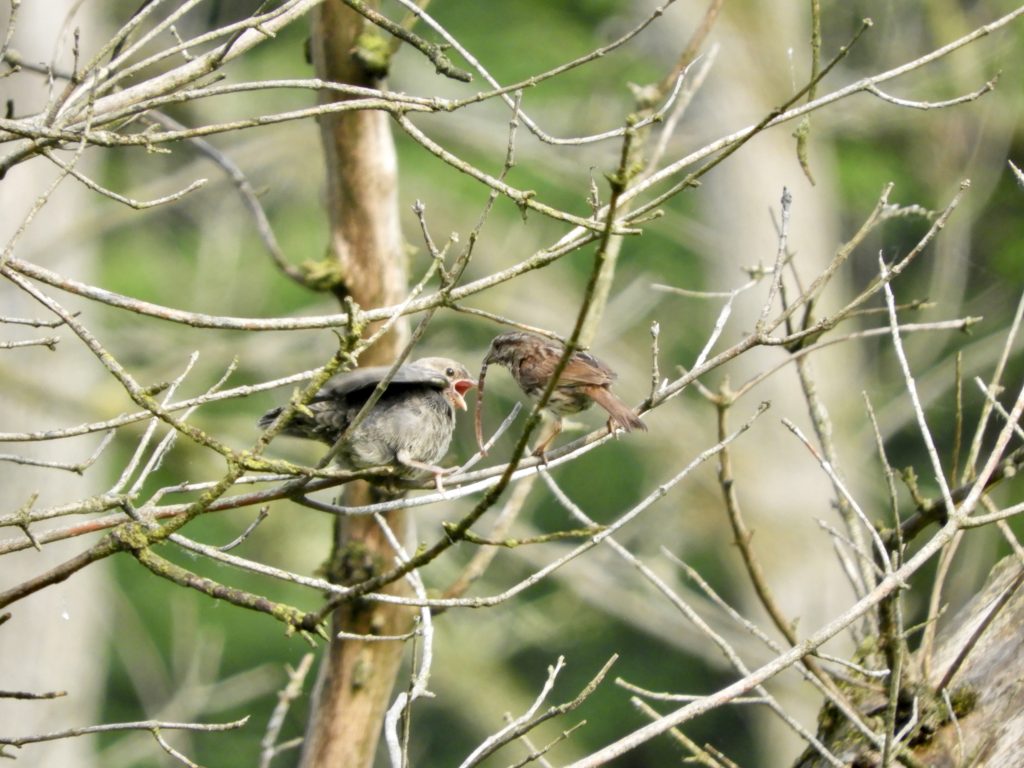
Brown-headed Cowbirds have few friends, birders off-handedly dismiss them as unwelcome, but why? They follow the same leeching lifestyle of Eurasian Cuckoos who, while not quite revered, have a place in folklore and are admired for their looks and eponymous song. If cowbirds were dressed like Baltimore Orioles, for example, how deep would be our grudge against them? I suspect not very, that we’d probably think, “Glorious bird! Too bad about its put-upon parents.” But cowbirds are brown and black and we already know that to be an obstacle to easy social acceptance.
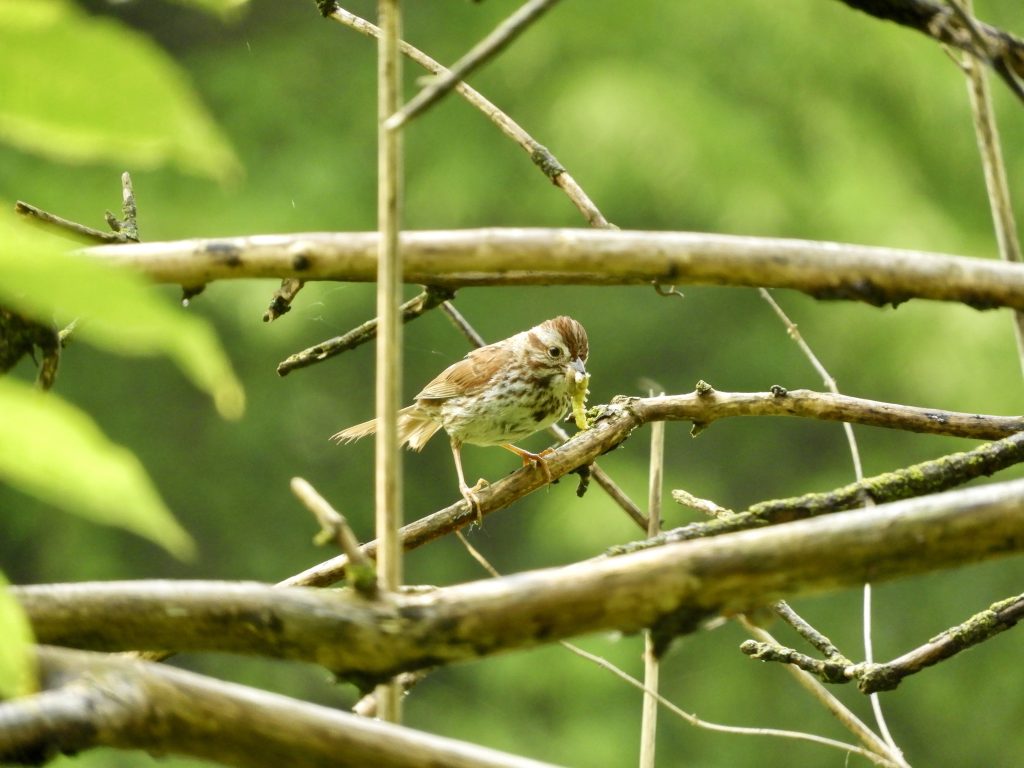
The young Brown-headed Cowbird and its foster parent Song Sparrows were my Birds of the Day. Socially acceptable or not I enjoyed watching the young cowbird idly checking out the big wide world while being attended by two busy and much smaller Song Sparrow.
This was such an interesting post, Peter! And a mink too! Thank you for continuing sharing your adventures!